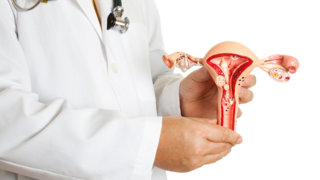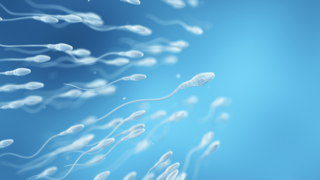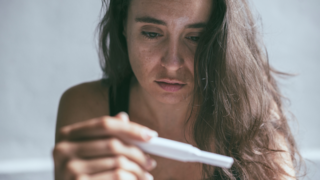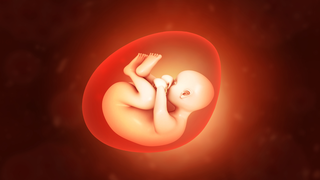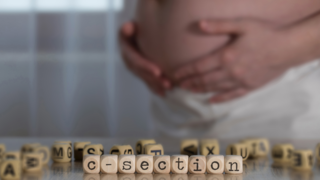In this article:
How Does Isthmocele Form?
An isthmocele happens when scar tissue from a caesarean section heals unevenly, leaving a small dip in the uterine wall. Several things can affect whether it develops:- Multiple caesarean deliveries: The risk increases with each surgical birth.
- Improper healing: Infections or poor tissue healing after surgery can affect the quality of healing.
- Surgical technique: The type of incision or closure method may influence scar formation.
- Uterine position: A backward-tilted uterus may be more prone to developing an isthmocele.
Symptoms You Might Notice
Many individuals with an isthmocele do not show any symptoms. However, when signs appear, they are often related to the menstrual cycle or pelvic discomfort. Common symptoms include:- Spotting or brown discharge between periods
- Prolonged menstrual bleeding
- Pelvic pain or cramping
- Difficulty conceiving after a caesarean birth
- Discomfort during intimacy
Can an Isthmocele Affect Fertility?
Yes, in certain cases, it can. The presence of an isthmocele may interfere with conception in several ways:- Fluid accumulation: The small pouch can trap old blood or fluid, which might leak back into the uterine cavity. This fluid can create an unfavourable environment for embryo implantation.
- Inflammation: Chronic inflammation around the scar can alter the uterine lining, reducing its receptivity.
- Altered uterine contractions: The uterus may not contract efficiently, preventing sperm or embryos from moving to the right place.
- Changes in cervical mucus: Some studies suggest that fluid accumulation near the cervix can interfere with sperm movement.
Diagnosis of Isthmocele
Diagnosing an isthmocele requires careful imaging. A doctor may recommend one or more of the following:- Transvaginal ultrasound (TVS): A common and non-invasive method to visualise the uterine wall and detect any niche.
- Saline infusion sonography (SIS): Uses saline to get a clearer view of the scar defect.
- MRI scan: Provides detailed images of the uterine layers and helps in treatment planning.
Can an Isthmocele Affect Future Pregnancies?
Most people with small or medium isthmoceles have healthy pregnancies. If the pouch is large, though, there can be some risks:- Implantation over the scar: The fertilised egg may implant too close to the scar, increasing the chance of complications like caesarean scar pregnancy.
- Uterine rupture: Though rare, a deeply thinned scar area may weaken during pregnancy or labour.
- Placenta-related issues: Sometimes, the placenta may attach abnormally near the scar, leading to conditions such as placenta accreta.
Treatment and Management Options
Treatment depends on how big the isthmocele is, what symptoms you have, and if it's affecting your fertility.Non-Surgical Management
If the defect is minor and the symptoms are mild, doctors may recommend:- Observation: Regular monitoring with scans to ensure it does not worsen.
- Medication: Hormonal regulation to manage irregular bleeding.
- Lifestyle changes: A balanced diet rich in vitamins A, C, and E can support tissue healing.
Surgical Management
For those experiencing persistent symptoms or fertility issues, surgical correction may help. Options include:- Hysteroscopic resection: A minimally invasive procedure where the excess tissue is trimmed through the vaginal route.
- Laparoscopic repair: Involves stitching and strengthening the uterine wall through tiny incisions in the abdomen.
- Combined approach: A mix of both methods for larger or more complex cases.
Natural and Preventive Care
Sometimes surgery is needed, but there are also natural ways to support your body:- Stay active: Gentle exercise promotes blood flow and healing.
- Eat nutrient-rich foods: Focus on iron, zinc, and antioxidants to support tissue repair.
- Avoid unnecessary caesarean births: If possible, discuss vaginal birth options after a previous caesarean with your healthcare provider.
- Follow post-surgery care instructions carefully: Proper rest and hygiene can significantly reduce the risk of scar complications.
Whether you’re pregnant, a new mom, or navigating postpartum, you don’t have to do it alone. Join our support group to connect, share, and support one another.
FAQs on Isthmocele and Fertility: Understanding the Link and Ways to Manage It
- Can an isthmocele heal on its own?
Small isthmoceles may not require treatment and can remain stable over time. However, they rarely heal completely without medical or surgical support. Regular monitoring helps ensure they do not cause complications. - Is it safe to get pregnant with an isthmocele?
Yes, many people with an isthmocele have healthy pregnancies. However, it is important to have early antenatal check-ups and ultrasound scans to monitor the strength of the scar and the implantation position. - How can I prevent an isthmocele after a caesarean section?
Prevention focuses on proper healing. Following medical advice after surgery, maintaining good nutrition, avoiding unnecessary strain, and ensuring an infection-free recovery can all reduce the risk of developing an isthmocele.



